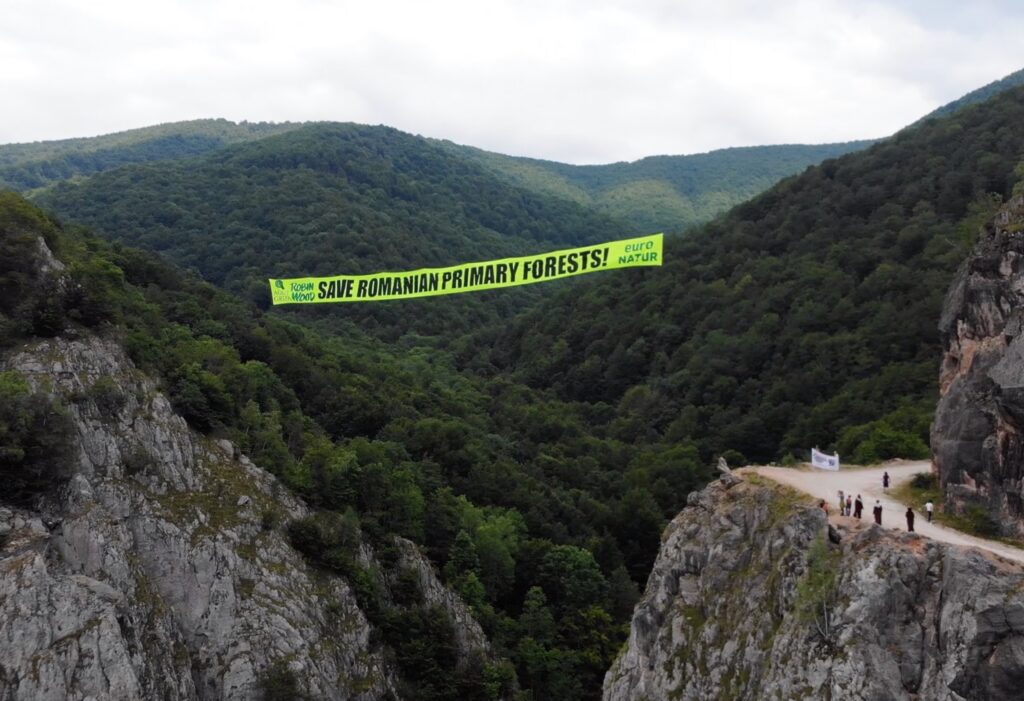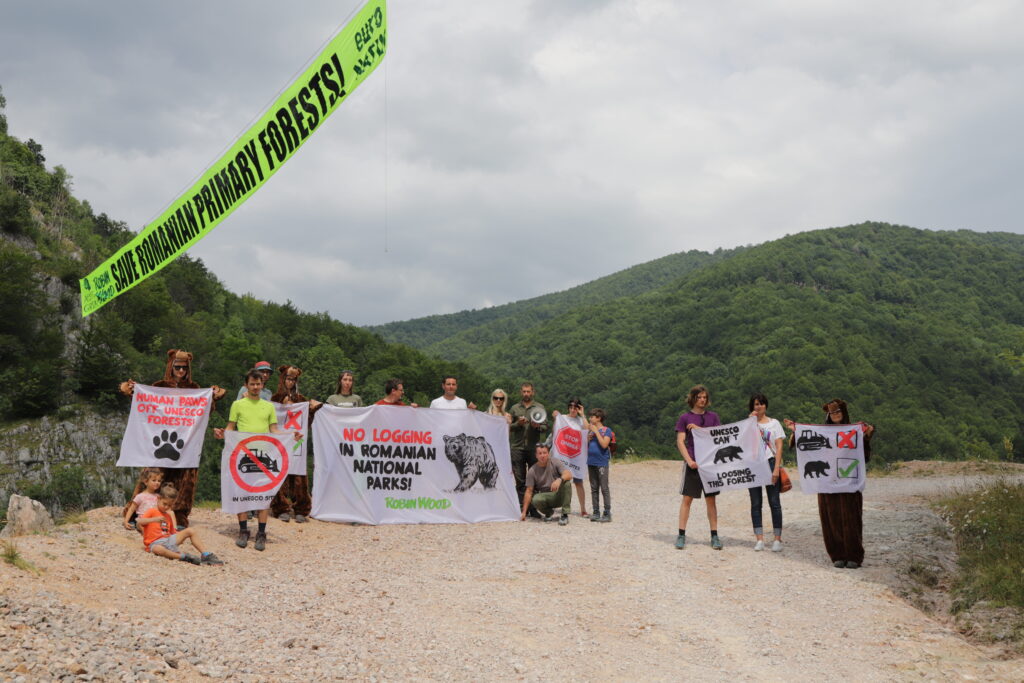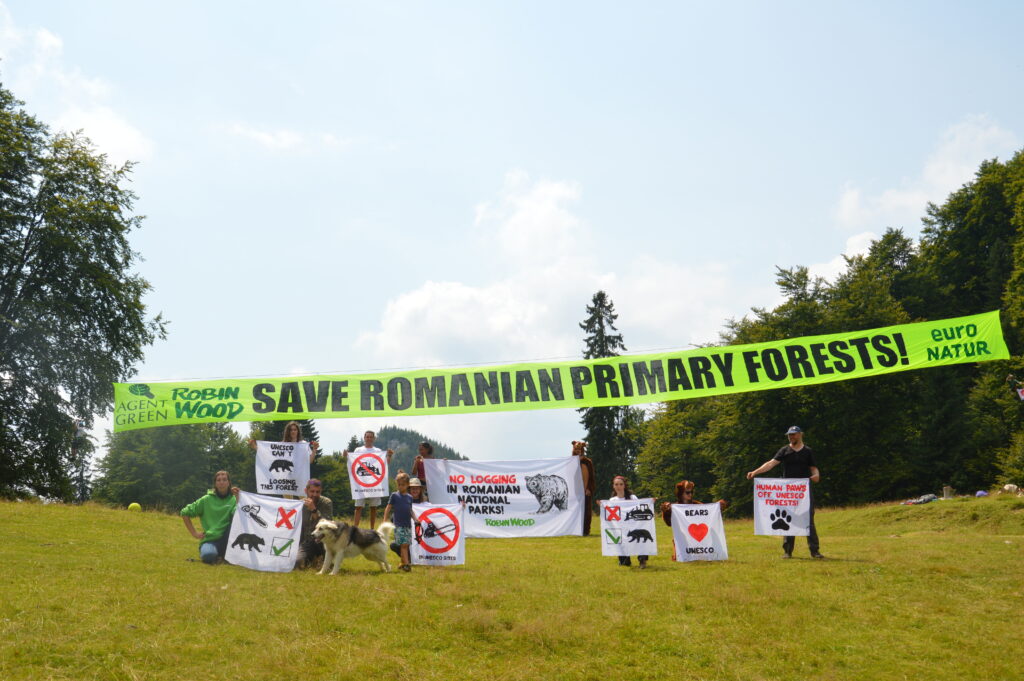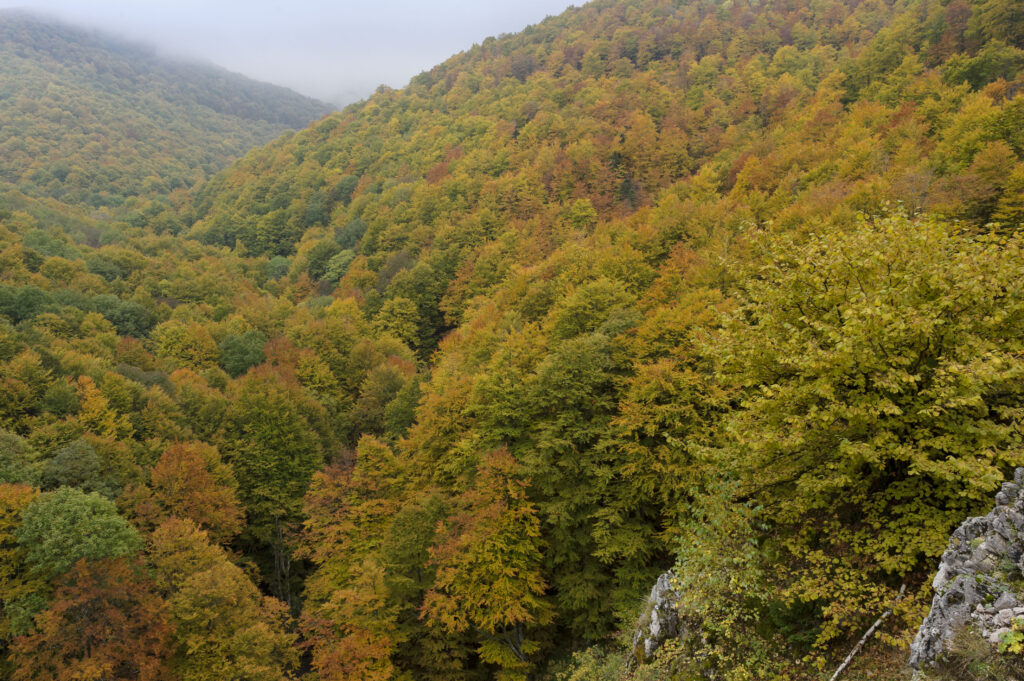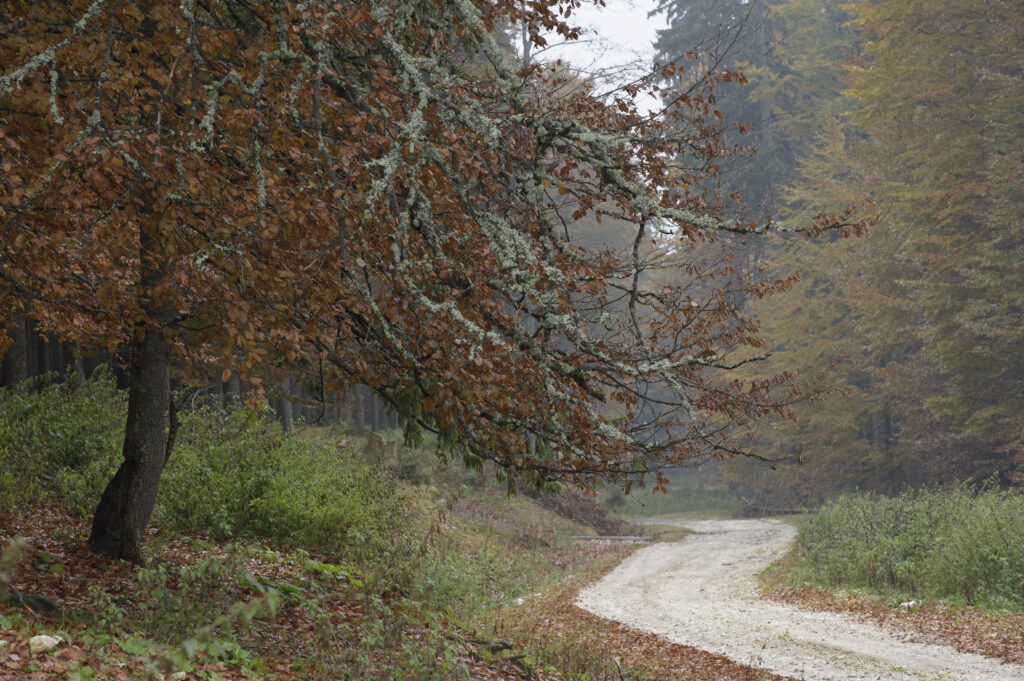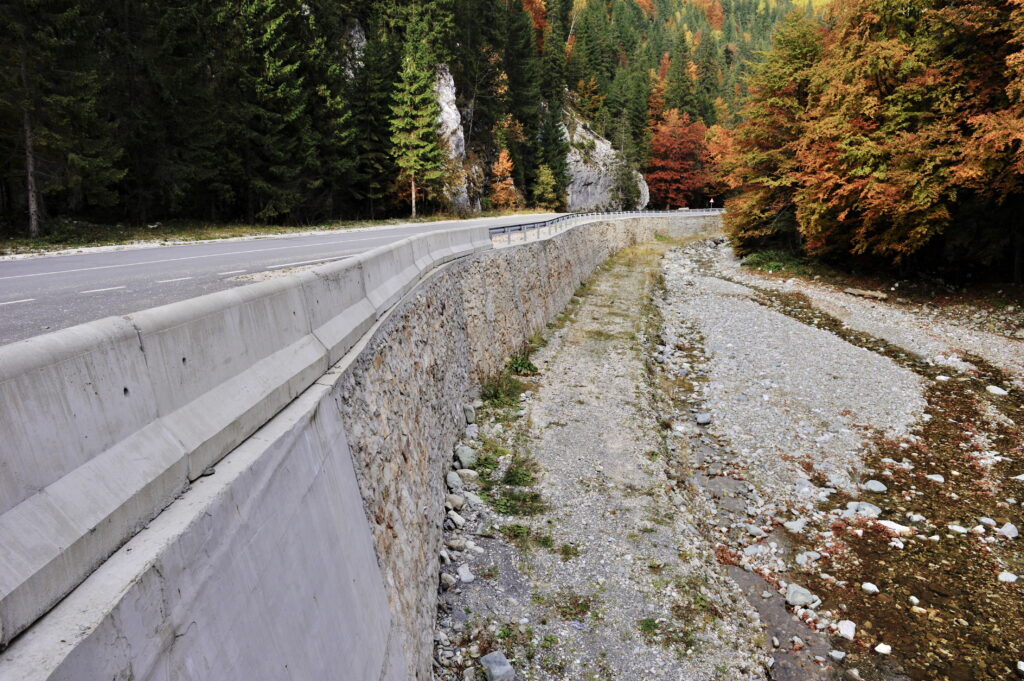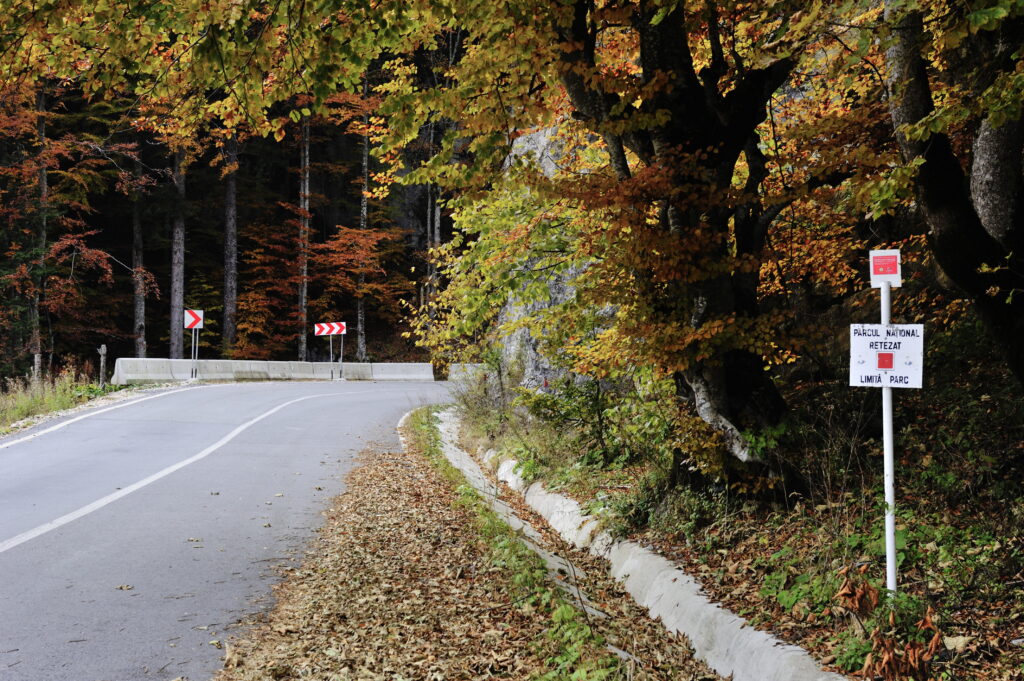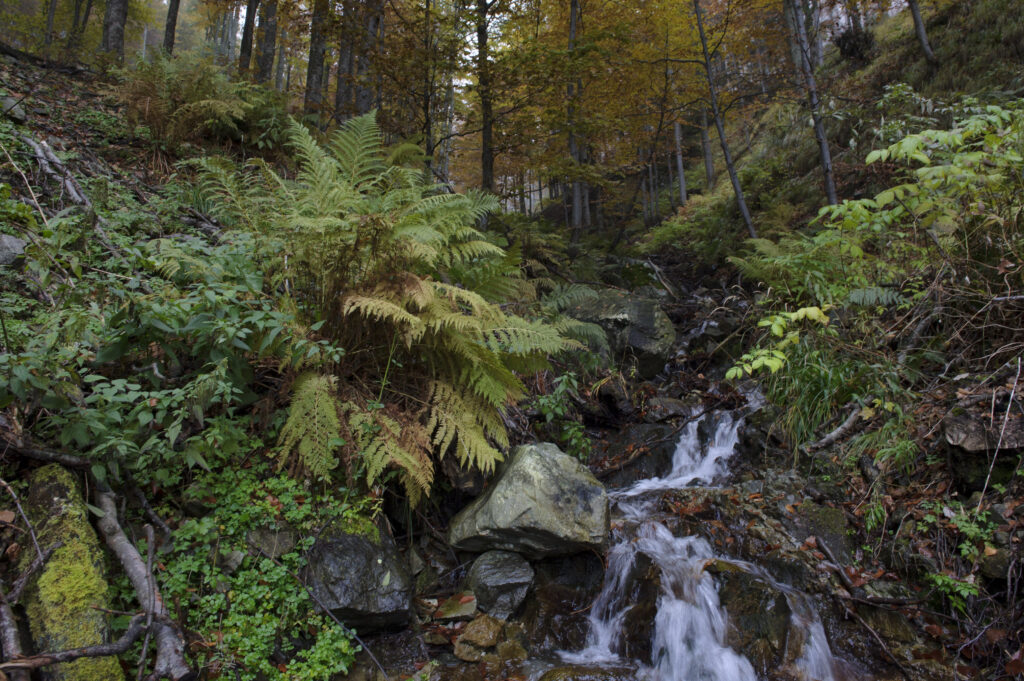Protest against destruction of UNESCO World Heritage Site by road construction and logging in Romania
The environmental organisations ROBIN WOOD, AgentGreen and EuroNatur are protesting against the destruction of Romania’s irreplaceable natural and primary forests. This past weekend, climbing activists made a spectacular show for the protection of the forests in the Domogled Valea Cernei National Park in the Romanian Southern Carpathians: They were holding a 50-meter-long banner with the words “SAVE ROMANIAN PRIMARY FORESTS!” On Saturday, the banner fluttered over a pass, on Sunday over a 200 meter wide valley. The activists thus marked the threatened component part “Ciucevele Cernei” of the UNESCO World Heritage site for the protection of ancient and primeval beech forests in Europe, which is under UNESCO protection for all humankind.
The protest is directed against the planned expansion of the National Road 66a in the middle of the Domogled – Valea Cernei National Park, which is also under the protection of the EU as a Natura 2000 site. The Romanian government is planning to upgrade the existing non-asphalted forest road to a two-lane highway. Of the 19 kilometres of the planned construction section, one kilometre runs through the core zone of the UNESCO protected area. This would jeopardise the status of the entire transnational European World Heritage Site for the protection of old beech forests. The conservationists call on the Romanian government to permanently protect these natural and primary forests, which are important for the entire EU, and to give up all plans for the expansion of National Road 66a.
Romania hosts the largest intact natural and primary forest areas in the EU outside of Scandinavia. However, the logging in these species-rich and structurally rich forests is progressing rapidly: in 2004 there were at least 218,500 hectares of untouched forests in Romania. Recent satellite image evaluations commissioned by the EuroNatur Foundation show that only half of them are still intact.
After previous plans for the expansion of the National Road 66a were stopped in 2010 through very public environmental protests, the situation has now rapidly worsened. On 25 July 2019, the tender for road construction was closed and the Romanian Minister of Transport Răzvan Cuc announced the start of construction within a month.
“The forest destruction and the expansion of the National Road 66a endanger the entire transnational UNESCO World Heritage site and destroy unique natural landscapes. Romania is thus acting against all humanity. We urge Prime Minister Viorica Dӑncilӑ to ensure that this destruction effort is stopped immediately, “says Gabriel Paun, founder and CEO of the Romanian environmental organization AgentGreen. The German nature conservation organization EuroNatur and Agent Green are fighting with the campaign “SaveParadiseForests” for the preservation of Romania’s primary forests.
“In times of mass extinction and climate crises, the destruction of Romanian forests is madness and has enormous consequences far beyond national borders,” says Jana Ballenthien, forest advisor to ROBIN WOOD. “We demand complete protection of Romania’s natural forests. The EU is also obliged to consistently enforce European nature conservation law!“
“Just recently Romania has received a rebuke from the UNESCO World Heritage Committee because it has failed to adequately protect its natural beech forests. Now a gravel road is planned to be cut into a national road and right through a World Heritage core area. This is not only an affront to UNESCO, it will also increase the pressure on Romanian forests, “explains Gabriel Schwaderer, Managing Director of the EuroNatur Foundation.
Background information:
The Domogled Valea Cernei National Park is with 612 square kilometers the largest national park in Romania and accommodates large primeval and natural forest areas. The entire national park is also designated as a EU Natura 2000 area. The EU Habitats and Birds Directives prohibit deterioration for EU-wide protected habitat types and species.
The transnational UNESCO World Heritage Site “Ancient and Primeval Beech Forests of the Carpathians and other regions of Europe” preserves 92,023 hectares of endemic European beech forest in 12 states. Of which 23,981 hectares are located in Romania. UNESCO World Heritage Sites represent the highest level of protected areas in the world and are under the protection for all humanity. Romania was recently reprimanded in July 2019 at the 43rd session of the World Heritage Committee in Baku for logging of natural forests in the buffer zones of the Romanian UNESCO component parts. The destruction of the natural beech forest and the planned road construction in Romanian UNESCO buffer and core zones endanger the status of the entire transnational World Heritage site: if these violations continue, the entire world heritage area is in danger of being abandoned. This would also affect the component parts in other countries such as Germany and Austria – eg. Serrahn in the German Müritz National Park or the Kalkalpen National Park in Upper Austria.
Protest pentru păduri UNESCO from AGENT GREEN on Vimeo.
